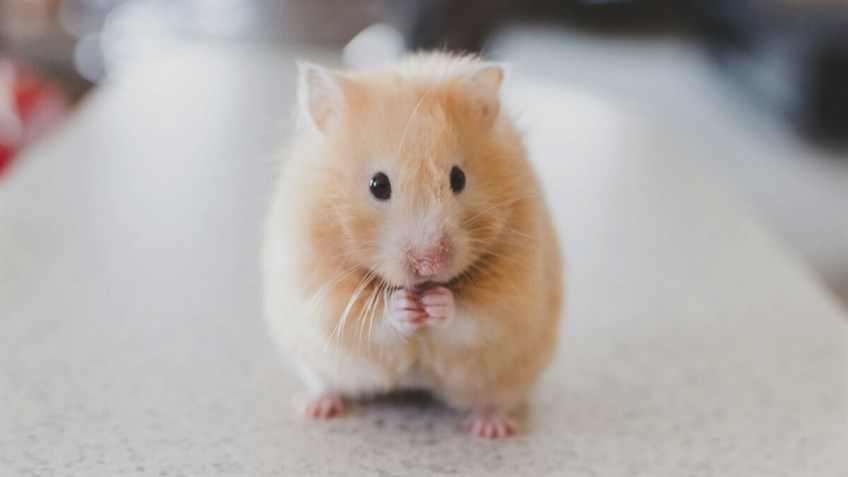Our Expert Guide to Syrian Hamsters
Published date: 04 October 2024

Syrian hamsters are popular pets because they are adorable and brimming with personality. They can make wonderful pets for the right owners; however, it is important to understand this interesting species and their care needs before diving into ownership.
How long do Hamsters live for?
The average life span is around 2-3 years. However, hamsters have been known to live longer!
What do Syrian Hamsters eat?
Hamsters are omnivorous rodents. In the wild they happily munch on plant and animal matter, eating seeds, vegetables and insects. Hamsters use their unique stretchy cheek pouches to store food to carry back to their burrows.
A pet hamster also needs a diet that includes plant and animal material. The best way to provide a nutritious diet to a hamster is to feed a high-quality commercial hamster mix supplemented with fresh vegetables and fruit.
Although hamsters will eat from their bowls, you can make their dinner more interesting by scattering some across their enclosure. This encourages hamsters' natural foraging and storing instinct.
Hamsters tend to be greedy, but adults only require roughly one teaspoon of hard feed daily. Fresh fruit and veg are important for hamsters but in small pieces (no bigger than a 5p piece) every other day.
What Vegetables can I Feed my Hamster?
Fresh vegetables and fruit are an important part of a natural hamster diet however only some are safe to feed.
The following can be given a few times a week:
- Bell Peppers (seeds are poisonous)
- Courgette
- Raspberry Leaves
- Broccoli
- Blueberries
- Mange Tout
- Cabbage Leaves
- Chicory
Hamsters and other rodents should NEVER be fed Avocado, Garlic, Iceberg Lettuce, Onions, Coconut, Tomato Leaves or Hot Chillies.
Are Hamsters social?
Most definitely not!
Syrian hamsters (in fact all hamster species) are solitary. Housing them together will only result in fighting and very unhappy hamsters.
Are Hamsters nocturnal?
Often described as nocturnal, the truth is hamsters are crepuscular. This means they are most active across the twilight hours.
It is important to keep hamsters sleeping habits in mind when considering where to place their enclosure. Hamsters in bedrooms often inadvertently end up waking up their owners...
What do I need for my hamster?
For a full set-up and all the accessories that hamsters need you can expect to spend around £350.
Here are the essentials for a happy hamster:
- A spacious multi-level cage with enough room for a wheel and 20cm of substrate.
- Soft bedding and suitable substrate.
- Wooden toys and gnaws – hamsters have continuously growing teeth and need suitable wooden chews to keep their teeth trim and healthy.
- Water Bottle
- Exercise Wheel (ideally between 25-30cm in diameter to avoid back strain)
- Small pet carrier
- Natural appropriate hamster food.
- A playpen or safe exercise area (hamsters require daily safe exercise outside their enclosure).Ensure the sides are high and add some tunnels and toys.
- Cardboard tubes and an enclosed hide or nest box.
How often do I need to clean my hamster's cage?
This will entirely depend on the size of the cage and the material used for their toileting. A full clean should be done every week or two and spot cleaning should be done daily.
By regularly removing the soiled areas it should be easy to keep your hamsters home fresh and clean. Always use pet-safe cleaner!
Here is a step-by-step for cleaning out your hamster's enclosure:
- Try to clean out your hamsters' cage when they are naturally awake. Put your hamster in a safe and secure place with a place to hide and play.
- Remove toys and hide from their cage.
- Remove all substrate and soiled bedding (leave one small handful as this will help their enclosure smell familiar when you reintroduce them)
- Spray the cage with a safe disinfectant and wash down with warm water, then leave to air dry.
- Clean their food bowls and water bottles.
- Once dry fill the cage back up with fresh substrate, bedding and don’t forget to add back that old handful.
Hamsters make endearing and wonderful pets for the right owner.


